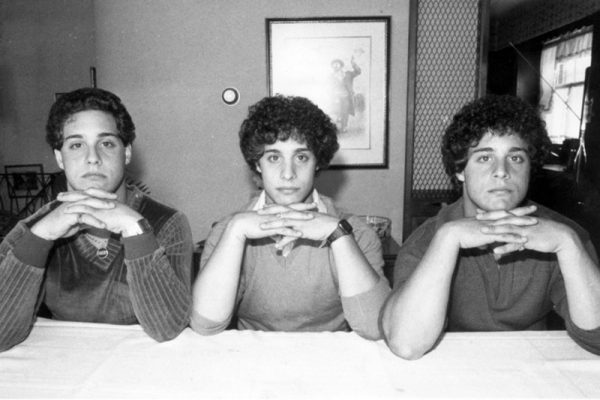@Filmhouse, Edinburgh from Mon 7 Jan 2019
Three Identical Strangers begins with a set-up that could come straight from a horror movie and ends with a revelation from the most paranoid conspiracy thrillers. Within these uncanny bookends, Tim Wardle’s documentary tells an extraordinary tale that is best experienced knowing as little as possible beyond the central premise.
In 1980, young Robert Shafran enrolls at college in upstate New York. Eerily, countless people he’s never met greet him like an old friend, calling him Eddy. He explains this weird situation to a new friend, who immediately drives the baffled Robert across the state and introduces him to his doppelgänger. It turns out Eddy is not just an identical twin he knew nothing about, but had coincidentally attended the same college, dropping out at the end of the previous academic year. The delighted pair end up as a ‘believe-it-or-not’ human interest news story, and then the phone rings. It’s another young man named David, and unbelievably, the twins are triplets.
The documentary initially basks in the afterglow of its outlandish story. The three brothers appear in archival footage such as a famous episode of the chat show Donohue, playing up their similarities; and various friends and relatives appear to reminisce about this happy, chaotic time. It’s told in an ordinary way, but any lack of bells and whistles in its presentation are immediately counteracted by the sheer fascination the story exerts.
Wardle also paces the story immaculately, laying a trail of crumbs for the audience as the sinister implications of the triplets’ situation slowly becomes apparent. Why were they adopted? Why were they separated? And why did the adoption agency do their best to ensure the three would never have knowledge of the other? As well as this central intrigue, Wardle stuffs his narrative with themes such as class and nature against nurture, all the while returning to the joys and crushing tragedies of a family drama that could have flowed from the pen of Tolstoy. It won’t take any viewer long to notice that one talking head is particularly noticeable by its absence, adding a sense of genuine dread to the many layers the film already contains.
There are genuine questions to be asked about the approach the documentary takes. Given how the story unfolds, is Wardle guilty of wallowing in the same sensationalism and unconscionable ethics it depicts? Perhaps so, but this takes nothing away from a gripping, bizarre story that mixes compelling human drama with the outlandish detective procedural to chilling and heartbreaking effect.
